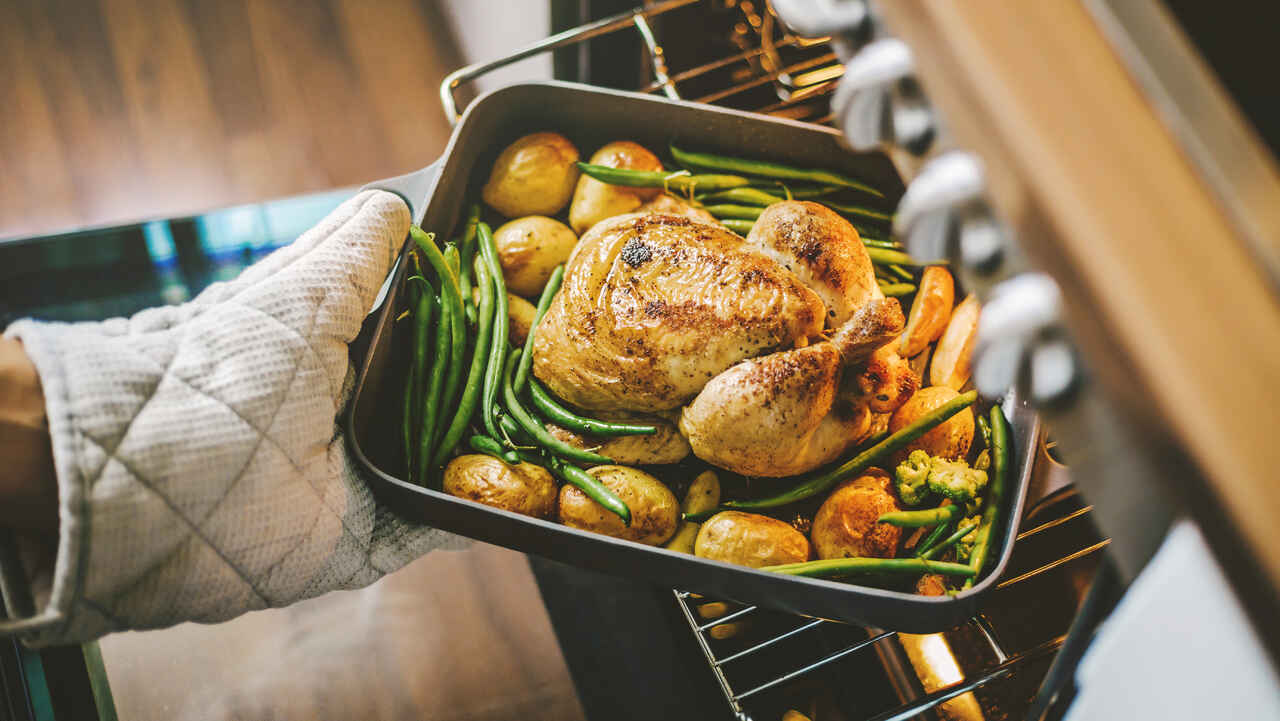
Don’t spoil the holiday fun with a foodborne illness. Here’s how to safely entertain guests.
When you prepare a holiday meal, you have a lot of things to plan for—what the menu will be, how you will set the table and what the schedule will be for preparing and serving the food. But one thing you may not give much thought to during holiday planning and preparation is how you are going to make sure no one gets sick from the food. But you should.
Here are 9 tips for keeping food safer to eat:
-
-
- Thaw it safely – Don’t leave food out on the counter to thaw. Instead, thaw overnight in the refrigerator. If you need to thaw something quickly, do so under cool running water or in the microwave.
- Separate raw foods – Raw meat should be stored in the refrigerator away from other foods and should be kept separate during preparation. Use different knives, cutting boards, containers and utensils for raw meat and other foods.
- Wash foods properly – Rinse fruits and vegetables under running water, unless they are labeled as pre-washed. Do not wash meat, poultry, seafood or eggs—this can cause germs to spread.
- Clean surfaces often – Thoroughly clean countertops, cutting boards, utensils, dishes and any objects that come into contact with food with hot soapy water or place in the dishwasher.
- Keep hands clean – Wash hands before and after preparing food, especially after handling raw meat. Also wash hands before serving food and eating. Plain soap and water is fine—just wash for at least 20 seconds and dry with a clean towel.
- Don’t reuse – Don’t use plates or utensils for cooked foods that were used for raw foods. Once raw food touches a surface, it should be thoroughly washed with hot soapy water before reusing.
- Cook food fully – Use a food thermometer to make sure meat has reached a safe temperature and is fully cooked. Check this temperature chart from the USDA for minimum internal temperatures.
- Keep foods at proper temperatures – If foods will be sitting out for any length of time, keep hot foods hot by using a warming tray or chafing dish. Keep cold foods cold by keeping in the fridge or a cooler until just before serving or place over an ice bath. Keep foods out of the temperature danger zone (between 40oF and 140oF), where germs grow rapidly.
- Cool and store food quickly – Don’t leave perishable food out at room temperature for more than 2 hours (1 hour if temp is over 90oF). Place food in shallow containers so it cools more quickly and refrigerate promptly. Watch the video above for more tips on safely storing leftovers.
-
Copyright 2021 © Baldwin Publishing, Inc. All rights reserved.
Health eCooking® is a registered trademark of Baldwin Publishing, Inc. Cook eKitchen™ is a designated trademark of Baldwin Publishing, Inc. Any duplication or distribution of the information contained herein without the express approval of Baldwin Publishing, Inc. is strictly prohibited.
Date Last Reviewed: September 8, 2021
Editorial Review: Andrea Cohen, Editorial Director, Baldwin Publishing, Inc. Contact Editor
Medical Review: Perry Pitkow, MD
Learn more about Baldwin Publishing Inc. editorial policy, privacy policy, ADA compliance and sponsorship policy.
No information provided by Baldwin Publishing, Inc. in any article is a substitute for medical advice or treatment for any medical condition. Baldwin Publishing, Inc. strongly suggests that you use this information in consultation with your doctor or other health professional. Use or viewing of any Baldwin Publishing, Inc. article signifies your understanding and agreement to the disclaimer and acceptance of these terms of use.